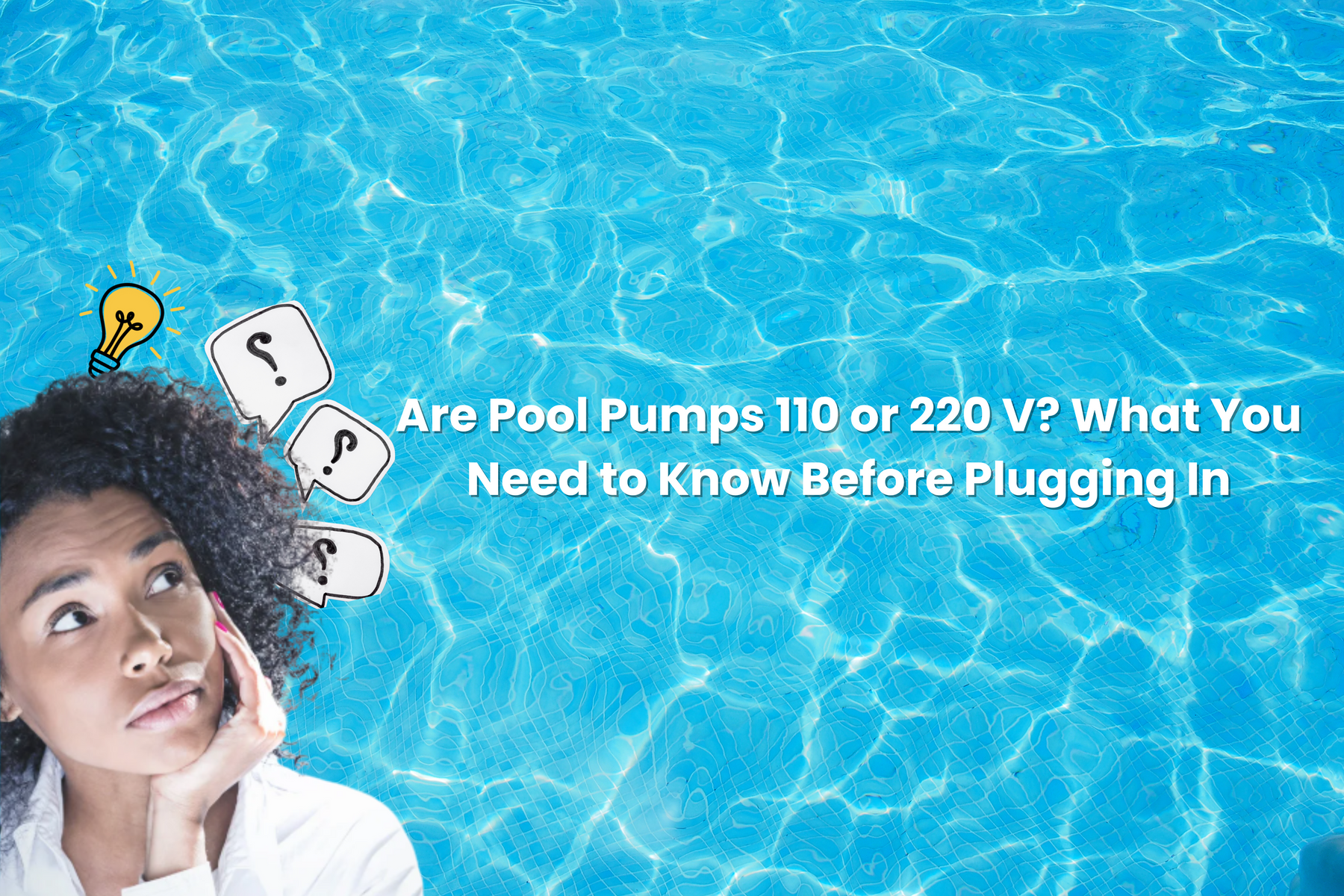
Are Pool Pumps 110 or 220 V? What You Need to Know Before Plugging In
Understanding Pool Pump Voltage: 110V vs 220V (or 120V vs 240V)
Is your pool pump sipping power from a regular outlet - or gulping it from a high-voltage line? Some run on regular 110V power, others need the stronger 220V setup.
Getting it wrong could wreck your pump or your breaker - and your weekend plans.

The Basics: AC vs. DC and Common Voltages
If you're shopping for a pool pump or replacing an old one, you'll come across voltage terms fast.
And they matter a lot more than most people think.
Are Pool Pumps AC or DC?
Just like your microwave or washing machine, pool pumps run on AC power.
That stands for alternating current. It’s the kind of electricity homes and appliances are wired for.
DC, or direct current, is what you'd find in battery-powered tools or solar systems.
Unless you're going off-grid with your pool setup (and let's be real, most aren't), you're dealing with AC.
Understanding 110V/120V and 220V/240V
You might see voltage written in pairs - like 110V/120V or 220V/240V.
That’s because these numbers vary slightly depending on the exact setup, but they refer to the same general category.
-
110V or 120V is your standard household power.
-
220V or 240V is for high-powered stuff like dryers, ovens, and bigger pumps.
Think of it like this: 110V is the quick snack, 220V is the full meal.
Pros and Cons of 110V/120V Pool Pumps
These are common for above-ground or smaller pools, and for good reason.
Pros:
-
Super easy to install. Plug it into a regular outlet and go.
-
No need to call an electrician if your setup is already wired.
-
Perfect for pools that don’t need a ton of power.
Cons:
-
Less powerful. If your pump needs to move a lot of water or run extra features, it might struggle.
-
Less efficient under heavy use.
-
Not ideal if you plan to upgrade your system later.
Let’s say you have a cozy above-ground pool in your backyard.
A 110V pump will likely handle your needs just fine - and save you the hassle of rewiring anything.
Pros and Cons of 220V/240V Pool Pumps
If your pool is bigger or has more bells and whistles, you’ll want a pump with some muscle.
Pros:
-
More efficient for higher workloads.
-
Handles large pools, long plumbing runs, and extra water features with ease.
-
Stays cooler under pressure, which helps the motor last longer.
Cons:
-
Installation might cost more upfront. You’ll probably need a licensed electrician.
-
Can’t plug it into a standard outlet - needs a dedicated breaker.
-
Might be overkill for smaller pools.
For example, if you have a large inground pool with a waterfall and attached spa, a 220V pump is almost always the way to go.
Key Factors When Choosing Your Pool Pump Voltage
Not sure which one to choose?
Here’s what to think about before making the call.
-
Pool size: Bigger pools need more power.
-
Current electrical setup: If you already have 220V service available near the pump, that opens more options.
-
Energy use: Higher voltage pumps often save on energy bills long term.
-
Add-ons and upgrades: Planning to add a heater or spa later? Think long-term and go for the stronger setup.
It’s kind of like buying a car.
If you're just driving around town, a compact works.
If you're towing a trailer, you need something beefier.
Determining Your Current Pool Pump Voltage
Before you buy a new pump or replace the old one, you’ll need to figure out what voltage you're working with.
Here’s how:
-
Check the pump label: Most pumps have a sticker or metal plate that lists voltage. It may say "115V," "230V," or "Dual Voltage."
-
Look inside the wiring box: Some pumps include a diagram showing how they’re currently wired.
-
Peek at the circuit breaker:
-
A single-pole breaker usually means 110V.
-
A double-pole breaker? That’s typically 220V.
-
-
Ask a professional: If anything looks unclear, play it safe and call an electrician.
One last note: some pumps are dual voltage, meaning they can be wired either way.
But you still need to set them up properly to match your system - don't assume it's automatic.
Bottom line?
Knowing your pool pump's voltage is just as important as picking the right size or speed.
A smart choice now means fewer headaches later - and a pool that's always ready when you are.
Related reading:



Leave a comment